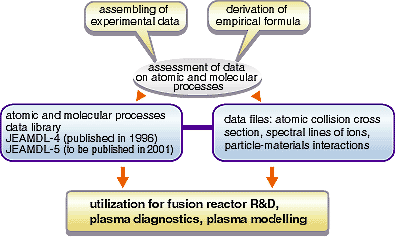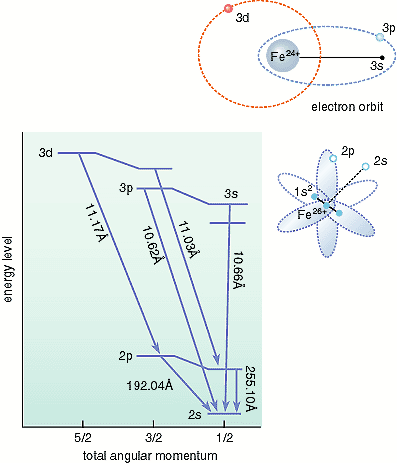Fusion plasma research requires various kinds of precise data
on microscopic physical processes such as collision cross sections
in plasmas having temperatures ranging from extremely high temperatures
of up to several hundred million degrees at the plasma center
to relatively low temperatures of about ten thousand degrees at
the plasma boundary, namely near the first wall and the divertor.
The data required include, for example, information about reactions
of high energy nuclei and highly ionized heavy atoms in the high
temperature plasma core and about various atomic and molecular
processes at the low temperature plasma boundary.
We have assembled and assessed various data on atomic and molecular
processes in a fusion plasma and published an extensive data library,
Japanese Evaluated Atomic and Molecular Data Library (JEAMDL)
as a basic database for fusion R? as shown in Fig. 5-5.
We have recently published a series of spectroscopic data tables
containing basic physical quantities such as wavelengths, energy
levels and transition probabilities for about 20,000 spectral
lines of highly ionized ions: titanium, vanadium, chromium, manganese,
iron, cobalt, nickel, krypton and molybdenum. This database will
be useful for identifying highly ionized impurity ions in future
fusion reactors in which iron-like metal materials are considered
for use as first wall materials. It is also useful for the present
fusion plasma experiments to estimate plasma temperatures using
the spectroscopic measurement of spectral lines emitted from impurity
ions and to evaluate the energy loss from the plasma by measuring
the light emission from impurity ions. Figure 5-6 shows an example
of the contents of the data library described, with typical spectral
lines to be used for the identification of multiply-charged iron
ions. |

